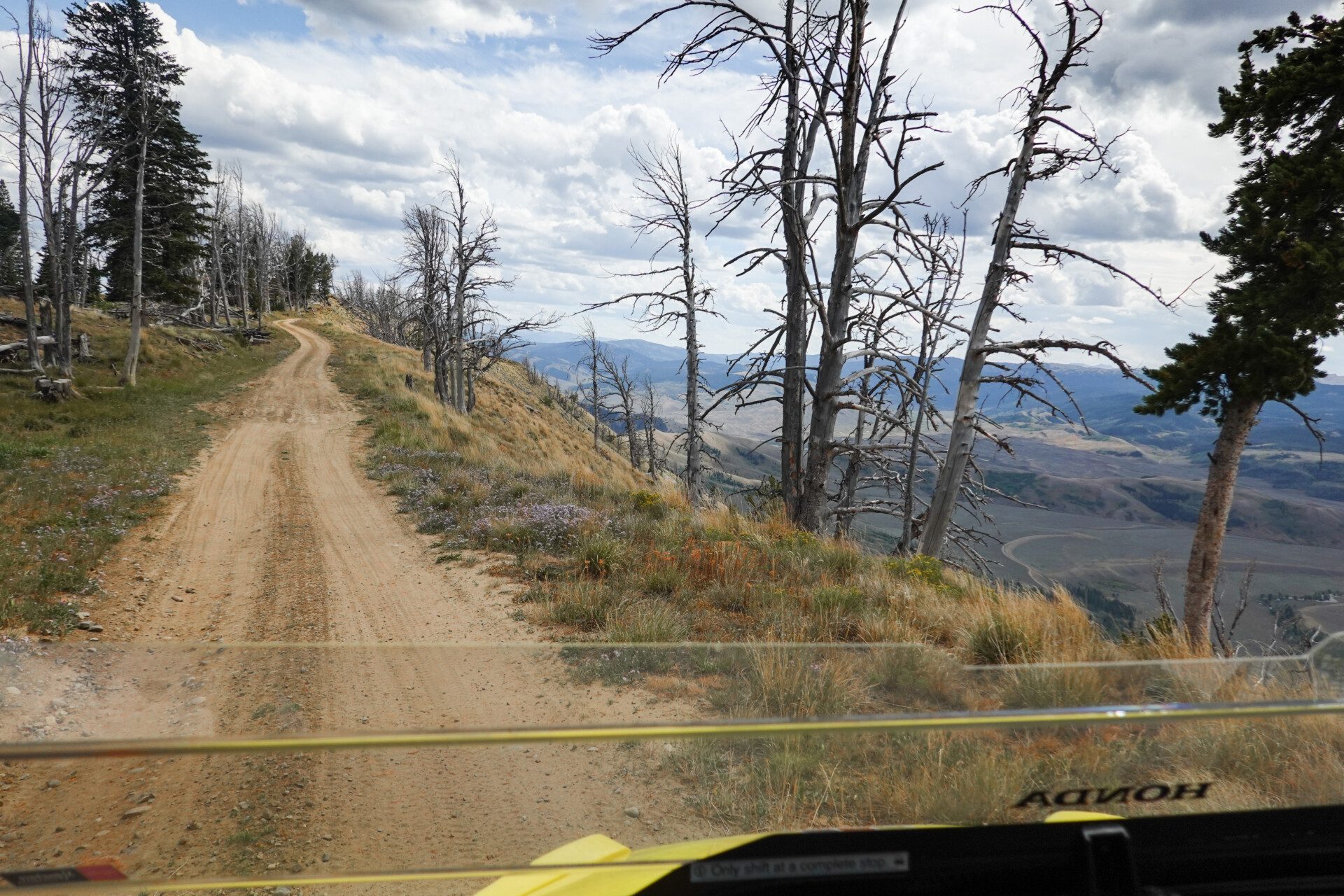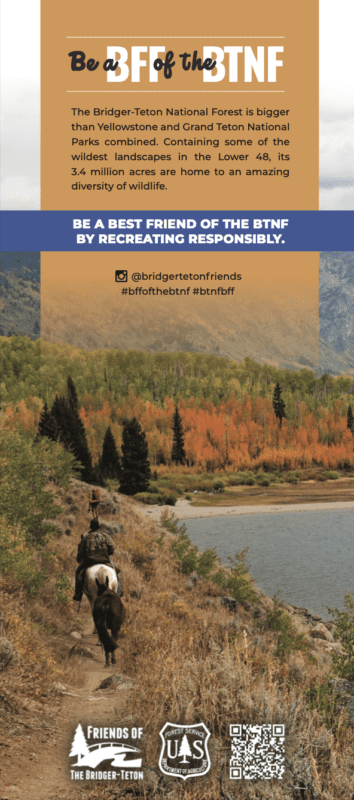
There are hundreds of miles of designated roads and trails open to OHVs (off-highway vehicles) on the BTNF.
OHV recreation must occur on designated routes only. All roads and trails are designed for the class of vehicle and the season of use. There are no “open” areas for OHV recreation on the Jackson or Blackrock Ranger Districts. Motorized vehicles are restricted to designated routes to prevent resource damage, wildlife disturbance, and conflicts between motorized and non-motorized visitors, particularly during the fall hunting season. The Motor Vehicle Use Map is updated and printed annually and shows the motorized route system available for each Ranger district of the Bridger-Teton National Forest. Find the Motor Vehicles Use Map online, at the individual Ranger districts or from the BTNF Supervisor Office in Jackson.








